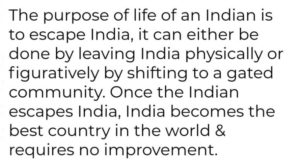The symmetry, the wealth, and the mirage of American elegance
Dr. V had to give a talk at Princeton, and I tagged along. We expected an elite university (our milieu for the last decade). What we didn’t expect was how stunningly beautiful the town would be.
Everything felt curated: the neoclassical facades, the quiet wealth (it has a Hermes store for Heaven’s sake), the perfectly measured charm of a place that knows exactly what it is.
It made me think of how different America’s internal geography is from the UK or France. In Europe, the capital is the cultural and intellectual heart—London, Paris. In the US, it’s more like Germany or Italy: multiple regional power centers—city-states in all but name.

And Princeton is one of them. Unlike either of the Cambridges:
-
Cambridge, Massachusetts is a behemoth, flowing into the urban sprawl of Boston, powered by MIT and Harvard.
-
Cambridge, UK is insular, its 31 colleges often more concerned with their individual legacy than the town around them.
But Princeton, somehow, has achieved a kind of graceful middle ground. It’s not sprawling, but it breathes. It doesn’t dominate, but it defines. Continue reading A Postcard from Princeton





